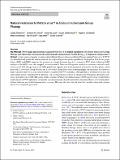Files in this item
Natural resistance to Potato virus Y in Solanum tuberosum Group Phureja
Item metadata
| dc.contributor.author | Torrance, Lesley | |
| dc.contributor.author | Cowan, Graham | |
| dc.contributor.author | McLean, Karen | |
| dc.contributor.author | MacFarlane, Stuart | |
| dc.contributor.author | Al-Abedy, Aqeel | |
| dc.contributor.author | Armstrong, Miles | |
| dc.contributor.author | Lim, Tze-Yin | |
| dc.contributor.author | Hein, Ingo | |
| dc.contributor.author | Bryan, Glenn | |
| dc.date.accessioned | 2020-01-20T15:30:09Z | |
| dc.date.available | 2020-01-20T15:30:09Z | |
| dc.date.issued | 2020-03 | |
| dc.identifier | 265378613 | |
| dc.identifier | 240d6e92-d673-42a1-b0e6-55e456a1c91b | |
| dc.identifier | 85078639142 | |
| dc.identifier | 000507710400001 | |
| dc.identifier.citation | Torrance , L , Cowan , G , McLean , K , MacFarlane , S , Al-Abedy , A , Armstrong , M , Lim , T-Y , Hein , I & Bryan , G 2020 , ' Natural resistance to Potato virus Y in Solanum tuberosum Group Phureja ' , Theoretical and Applied Genetics , vol. 133 , pp. 967–980 . https://doi.org/10.1007/s00122-019-03521-y | en |
| dc.identifier.issn | 0040-5752 | |
| dc.identifier.uri | https://hdl.handle.net/10023/19317 | |
| dc.description | This work was supported by funding from the Scottish Government’s Rural and Environmental Science and Analytical Services (RESAS) Division. | en |
| dc.description.abstract | A new source of genetic resistance derived from Solanum tuberosum Group Phureja against Potato virus Y (PVY) was identified and genetically characterised in three diploid biparental potato populations. Segregation data for two populations (05H1 and 08H1) suggested the presence of a single dominant gene for resistance to PVY which, following DaRT analysis of the 08H1 cross, was mapped to chromosome 9. More detailed genetic analysis of resistance utilised a well-characterised SNP-linkage map for the 06H1 population, together with newly generated marker data. In these plants, which have both S. tuberosum Group Phureja and S. tuberosum Group Tuberosum in their pedigree, the resistance was shown to map to chromosome 9 at a locus not previously associated with PVY resistance, although there is evidence for at least one other genetic factor controlling PVY infection. The resistance factor location on chromosome 9 (named as Ry(o)phu) suggests a potential role of NB-LRR genes in this resistance. Phenotypic analysis using a GUS-tagged virus revealed that a small amount of PVY replication occurred in occasional groups of epidermal cells in inoculated leaves of resistant plants, without inducing any visible hypersensitive response. However, the virus did not enter the vascular system and systemic spread was completely prevented. | |
| dc.format.extent | 14 | |
| dc.format.extent | 1707606 | |
| dc.language.iso | eng | |
| dc.relation.ispartof | Theoretical and Applied Genetics | en |
| dc.subject | QH301 Biology | en |
| dc.subject | S Agriculture | en |
| dc.subject | DAS | en |
| dc.subject.lcc | QH301 | en |
| dc.subject.lcc | S | en |
| dc.title | Natural resistance to Potato virus Y in Solanum tuberosum Group Phureja | en |
| dc.type | Journal article | en |
| dc.contributor.institution | University of St Andrews. Biomedical Sciences Research Complex | en |
| dc.contributor.institution | University of St Andrews. School of Biology | en |
| dc.identifier.doi | 10.1007/s00122-019-03521-y | |
| dc.description.status | Peer reviewed | en |
This item appears in the following Collection(s)
Items in the St Andrews Research Repository are protected by copyright, with all rights reserved, unless otherwise indicated.

